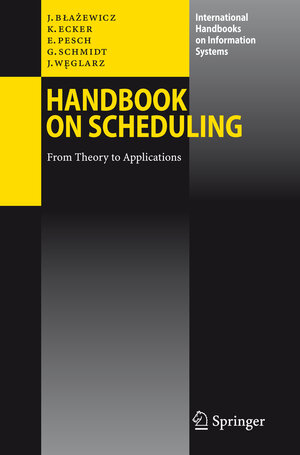
×
![Buchcover ISBN 9783540322207]()
From the reviews:
„What distinguishes the present book by Blazewicz et al. from a number of other new and interesting books on scheduling is its emphasis on the relevance of academic research to practical applications, which is precisely manifested in its title. … Overall, the reviewed book … is a very significant contribution to literature on scheduling and a must for anyone who is involved in the field as a student, researcher or practitioner. I heartily recommend it for study.“ (Eugene Levner, Journal of Scheduling, Vol. 12, 2009)
Handbook on Scheduling
From Theory to Applications
von Jacek Blazewicz, Klaus H. Ecker, Erwin Pesch, Günter Schmidt und Jan WeglarzThis handbook is in a sense a continuation of Scheduling Computer and Manu facturing Processes [1], two editions of which have received kind acceptance of a wide readership. As the previous volume, it is the result of a long lasting Ger man-Polish collaboration. However, due to important reasons, it has a new form. Namely, following the suggestions of the Publisher, we decided to prepare a handbook filling out a gap on the market in the area. The gap concerns a unified approach to the most important scheduling models and methods with the special emphasis put on their relevance to practical situations. Thus, in comparison with [1], the contents has been changed significantly. This concerns not only correc tions we have introduced, following the suggestions made by many readers (we are very grateful to all of them) and taking into account our own experience, but first of all this means that important new material has been added. It is character ized in Chapter 1, and, generally speaking, covers a transition from theory to ap plications in a wide spectrum of scheduling problems, hidependently of this, in all chapters new results have been reported and new illustrative material, includ ing real-world problems, has been given. We very much hope that in this way the handbook will be of interest to a much wider readership than the former volume, the fact which has been under lined in the title.



